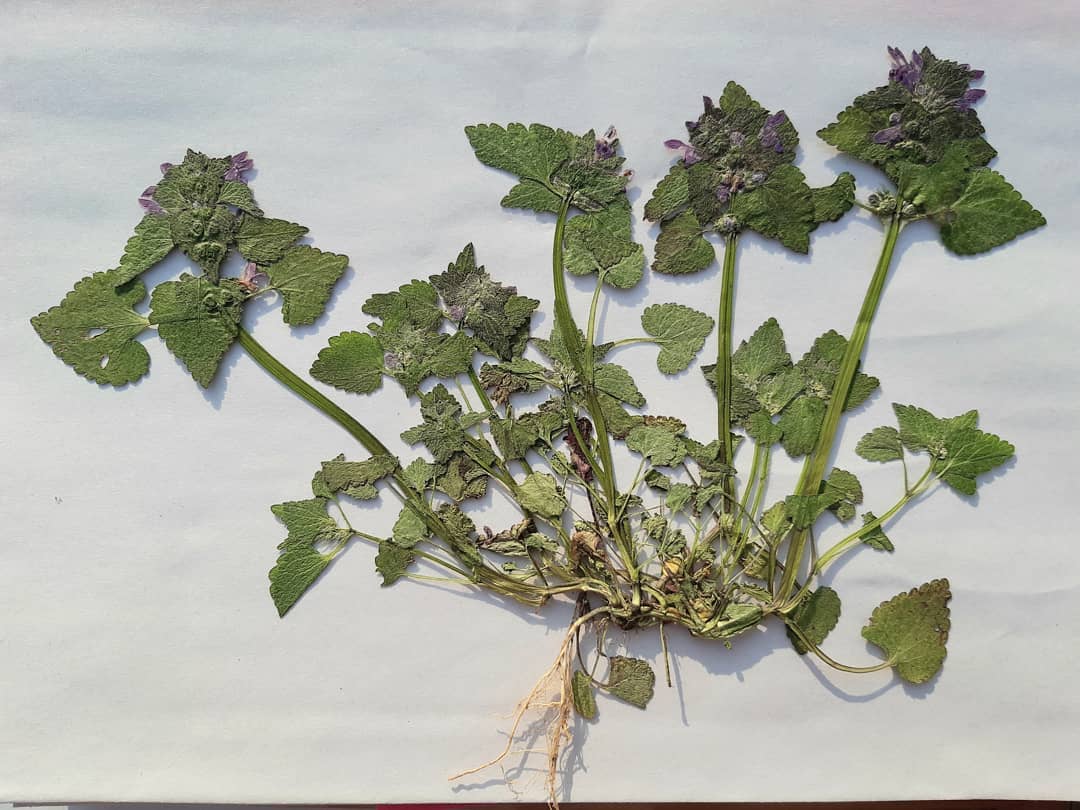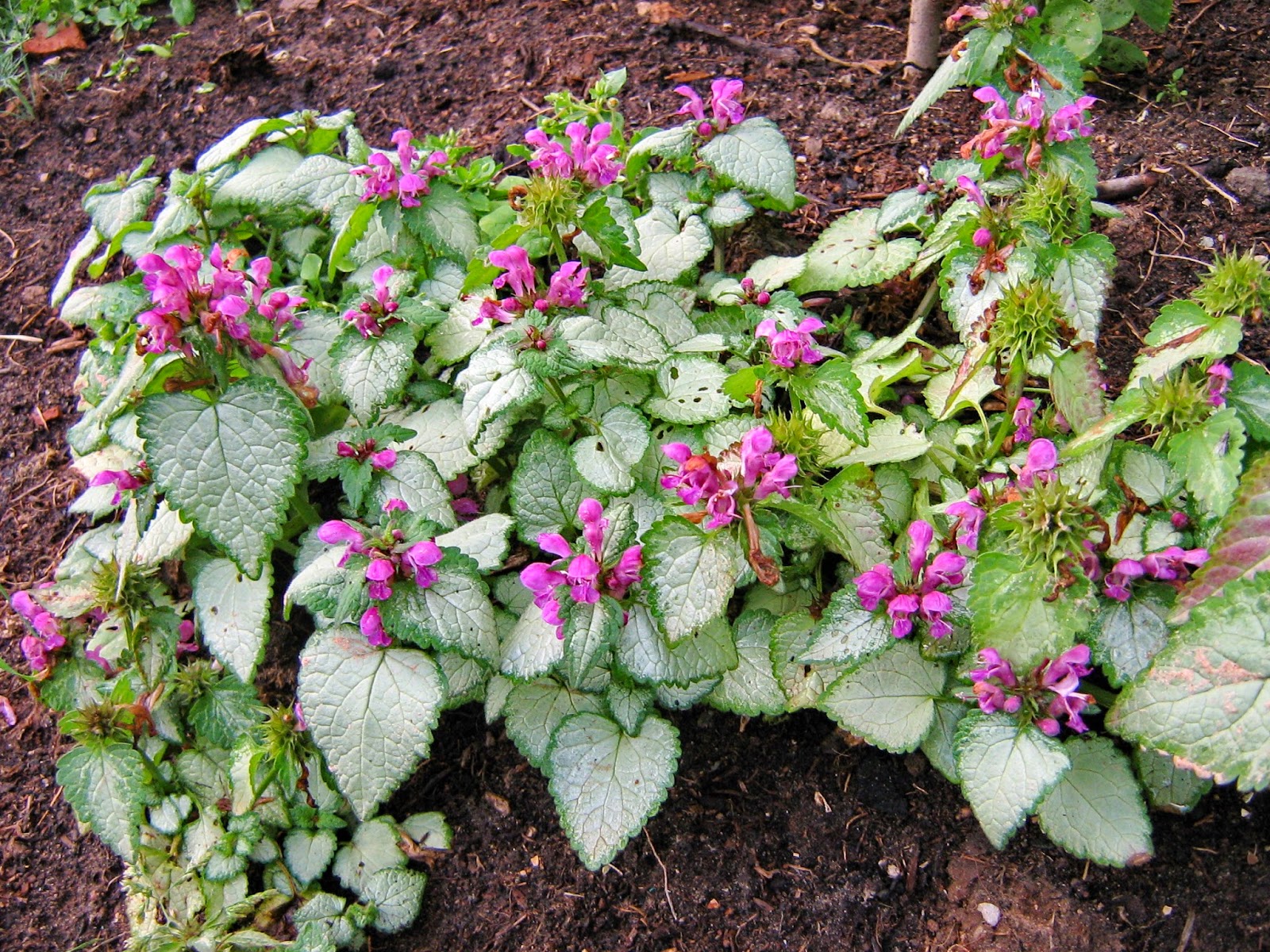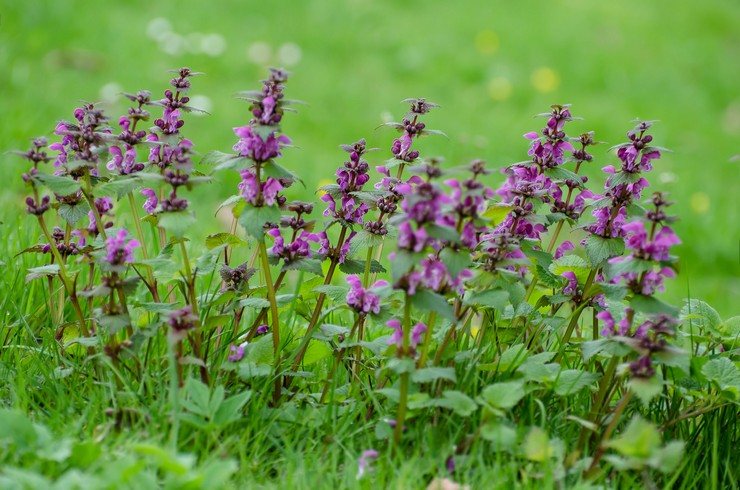Speckled lamb - planting and care
Content:
- What does speckled speckled look like?
- Common varieties
- Healing properties
- Briefly about the history of appearance
- Features of care for speckled speckled in the open field
- Features of care in winter during a dormant period
- When and how it blooms
- How to propagate speckled speckled
- Possible problems when growing speckled speckled
Speckled lamb is a fairly common plant, which in many countries is considered a weed. The flower is very inconspicuous and resembles a nettle without stinging antennae with multi-colored buds. The plant has medicinal properties and is actively used in folk medicine, it is important in the arrangement of landscape design.
What does speckled speckled look like?
The flower is very common in nature, which is why many consider it an annoying weed. The plant is classified as Lamiaceae or Labiatae.
The description of the clear is defined by the following points:
- the stem is knotty and twists along the ground, rising 15-20 cm;
- the leaves are dark green in color with a white spot in the middle;
- the shape of the leaves is drop-shaped with jagged edges;
- flowers can be white, purple or slightly pink.
Lamb is especially common in Eastern Europe. Instances can be annual or biennial.
Common varieties
Lamb is divided into several varieties. Each variant has its own color of buds and leaves. Distinctive features are the shape and height of the plant:
- The Golden Anniversary cleaver has yellow flowers and is popularly called zelenchukovaya. She has yellow inflorescences and miniature leaves. Lamb spotted Golden Anniversari is often planted in gardens and flower beds;
- Purple Dragon is the most common variety, called red nettle. Dragon has the widest prevalence;
- Lamium Pink Chablis has pink flowers that are located in the nodes of the leaves with a clear green-white pattern;
- Lamium is a bush on which white buds bloom. The second name is "deaf nettle".
There are several other varieties of Lamium Maculatum that have unique bud color, leaf shape and plate shade.
Healing properties
The plant is rich in many trace elements, which are contained precisely in the leaves and trunks of young shoots:
- flavonoids;
- vitamin C;
- essential oils.
- tannins;
Infusions are used to treat coughs, relieve inflammation, and are used to treat urinary problems. An herbal decoction is added to body, hand and foot baths. It has an excellent healing effect. Gynecologists recommend using a weak decoction solution for douching.
Briefly about the history of appearance
The distribution area is quite large: Asia, Europe, North America. It was noticed that the plant has not only medicinal properties, it is also aesthetically attractive, and prevents weeds. Therefore, wild specimens began to be planted near the house. In the future, the cleaver became one of the most common specimens that is used for landscape design.
Features of care for speckled speckled in the open field
The plant is not whimsical and does not require special conditions for normal growth and flowering. The main thing is to choose a suitable place with good soil and organize regular watering.
Temperature
Winter hardiness is striking - the leaves will turn green until frost. The plant will have a normal appearance even at 5 ° C. In summer, the bush can withstand the highest temperatures if watering is moderate. A comfortable temperature is 20-25 ° C.
Lighting
An ideal place for growing would be a plot that is in the shade of tree crowns. Can be planted in flower beds next to tall flowers or shrubs.
Watering
The plant loves moisture, so watering should be frequent and abundant. Care must be taken to ensure that the water does not stagnate.
Spraying
The flower tolerates spraying normally, so watering can be done from a watering can.
Humidity
The plant is not whimsical in terms of humidity. If watering is done regularly, then there will be enough evaporation from the soil.
Priming
In order for the beetle to develop normally, you need to select a site with light and moderately fertilized soil. The composition should include minerals and trace elements, but it is not advisable to take too fertile soil, since it causes the plant to enter the phase of aggressive growth.
Top dressing
For feeding, you can use a mullein soaked in water or mineral fertilizers in liquid form.
Fertilizers need to be applied as needed. If the bush is growing slowly, you need to add top dressing.
Features of care in winter during a dormant period
Speckled lamb, planting and caring for which is carried out according to standard gardening rules, is not whimsical in winter. Preparation for wintering is carried out as follows:
- By the end of summer, top dressing stops.
- Since September, the volume of bushes is gradually reduced by pruning.
- Watering is significantly reduced.
The plant tolerates frost normally, so you do not need to cover it with leaves, pine needles or film.
When and how it blooms
Different species have unique flowering periods. It usually starts in May and ends in October. Flowers of each variety have the same structure, but different color and size.
Types of flowers
Flowers can be of different colors, ranging from dark purple to white.
Flower shapes
The bud is shaped like a snapdragon (Antirrhinum). The flower can reach a length of 2-3 cm.
Flowering period
Flowering begins in late spring and continues until late autumn.
Changes in care during flowering
During the flowering period, you need to carefully monitor the soil moisture and carry out periodic feeding - once every 2-3 weeks.
How to propagate speckled speckled
There are three types of breeding:
- germination of seeds;
- cuttings;
- division of the bush.
Each option has its own characteristics and methods of planting and rooting.
Germinating seeds
Sowing seeds is done in open ground in early spring or late autumn. It is necessary to make small trenches in which the seeds are evenly laid. Next, you should dig in with a small layer of earth and water. The seeds will germinate within 1-2 weeks.
Rooting cuttings
The stalk is harvested at the end of summer. How to do it right:
- Prepare a mixture of sand and peat. Place in a small container.
- Dig a twig into the substrate and water.
- Cover the pot with the cut bottle.
If condensation appears on the bottle, it is necessary to ventilate. When the roots appear, the sprout can be transplanted into open ground.
By dividing the bush
The bush is divided in early spring as follows:
- Dig up a large bush.
- Partially remove the earthy clod from the root system.
- Divide the bush into several parts.
It is easy to root such an instance if there are normal shoots on the root system.
Possible problems when growing speckled speckled
Speckled lamb does not attract pests very much, flower diseases are rarely manifested. But, if you disrupt watering, then some problems may arise.
Diseases
Diseases affect the lamb quite rarely. Sometimes problems can arise with the root system, which is close to the surface. As a preventive measure, you can sprinkle the earth around the trunk with ash.
Pests
In the dry season, with a lack of moisture, a scale insect, a spider mite can attack the plant. An open area with a claw can attract caterpillars, mealybugs. You need treatment with special chemicals, or you can treat the leaves with a soda solution.
Lamb is a very popular herb that is used in folk medicine and landscaping. Unpretentious, rapidly growing - the main advantages that are appreciated by gardeners. There are many varieties that differ in the color of buds and leaves, so everyone will find a variety to their liking.























